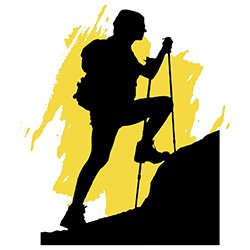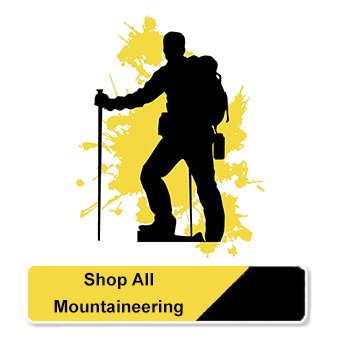
Mountaineering Top 10
10 of the Best Mountaineering Sunglasses for 2021 and What You Might Want to Consider When Picking Your Running Sunglasses in 2021
What you need to Consider

When mountaineering/trekking you need a pair of sunglasses that can keep up with you. If you love mountaineering you know the value of great protective gear and your eyewear is no exception.
When mountaineering/trekking sunglasses are crucial to protect your eyes from the high altitudes as you have very strong UV rays which are extremely damaging to your eyes and skin. Lenses that help reduce glare and brightness will allow you to see more comfortably and relax your eyes making your trip much more enjoyable and comfortable.
Below we have provided advice on selecting the best sunglasses for golf and our recommended top 10 sunglasses ranges for 2021 based on their excellent performance and reliability. Typically lightweight and strong, with excellent optical qualities and performance coated lenses, the brands are trusted and worn by the Pros. Only the highest standards are good enough, and you should expect the best.
Key Frame Considerations for Mountaineering Sunglasses:

- Plastic Frame Materials - You should only choose plastic frames for mountain-biking as metal frames can be dangerous as they could snap during a fall.
- Wrap around frame - 6 or 8 base curved frames (curved and highly curved lenses respectively) provides protection against the elements and a wide field of vision. Provides better ergonomic profile for firm fitting on face or head.
- Anti-slip nose pads - Help stop your sunglasses sliding down your nose when you are moving your head and provide maximum comfort.
- Anti-Slip Temples - Incorporates non slip components, helping to keep the frame securely on your face.
- Side Shield - Provides lateral protection against harsh sunlight found in snow and desert environments.
- Removable Retaining Strap - This allows attachment of a cord. This is not necessary it is a great idea to ensure you don’t lose your glasses. If your choosen frame does not include a retaining straps (or if you want a spare or different type) you can CLICK HERE to buy one.
- Lightweight- It's a good idea to have them as lightweight as possible this isn't necessary but just adds to your overall comfort.
- Removable Gasket - These are not necessary but we definitely recommend if you are planning on mountaineering, or any sport for that matter, for long periods of time (such as hikes up Everest/ 24 desert marathons etc) as they are exceptionally comfortable over use for long periods. This is a soft gasket held in place around the frame that avoids avoid snow, air or water penetrating behind the lens. A removable gasket is preferable as you are able to replace the gasket when it deteriorate due to sweat etc.
Key Lens Considerations for Mountaineering Sunglasses:

- Polycarbonate/ NXT - For mountain-biking only polycarbonate or the much stronger NXT lenses should be considered. Both glass and plastic lenses can shatter upon impact, which could cause lens particles to penetrate you eyes. Both polycarbonate and NXT lenses extremely impact resistance, light weight, durable and will not shatter upon impact. Both lens indexes are 100% UV protection.
- 100% UV protection - For protection from UV radiation
- Photochromic - These lenses will change colour with the light, becoming darker in bright sunlight, and lighter in an overcast sky. They avoid you having to change lenses or sunglasses in different light conditions as they will adjust to providing you with the optimum vision for the light available. Great if you plan to bike in and out of the forest.
- Anti-Reflective (AR) Lenses - Applied to the front or back surface of a lens, AR provides better visual acuity to judge distances, improves accuracy and eye comfort.
- Mirrored lens - Ideal for high level light, direct sunshine and bright condition, reduces glare and reflection of the sun especially from snow helping to eliminate eye strain making your trip more comfortable.
- Polarised - Polarised lenses cut glare from the highly reflective surface of the snow and help to reduce eye fatigue. Useful when around snow and ice as it cuts the intense glare from the surface. If you suffer from glare it’s a good idea to use this in conjunction with mirrored lenses and an AR coating.
- Anti-Fog Coating – Eliminates condensation inside the lens. If this is not available for your choice of frame you can buy an anti-fog gel/ spray which will also help you. CLICK HERE to buy Anti-fog gel/ sprays
Best Lens Colours to Consider for Mountaineering sunglasses:

- Grey/smoke - The grey, smoke and grey-green tints are the most common of tinted lens. They block out light without changing the overall colour perception and are great for all-weather use.
- Brown - Brown is a good choice for all-purpose wear. High-contrast browns and coppers will help the mountaineer in observing the changing contours and textures of the snow’s surface.
- Orange/Amber - Orange and Amber are good choices for partly sunny or varying conditions. In these light conditions they can help increase contrast to enable you read the terrain better and avoid pot holes, rocks and mud etc.
- Red - Red lenses are best in overcast or varying conditions. They improve contrast on the snow allowing mountaineers to see the definition of the snow.
- Yellow - Its more effective in low light conditions such as night time treks or overcast/ cloudy days. It is superior in contrast enhancement.
Prescription Considerations for your Mountaineering Sunglasses:

- Polycarbonate / NXT - We always recommend you choose an impact resistant lens material for sports this will ensure your lenses are stronger then your usually glasses and can withstand the impact from a rocks and stick. Polycarbonate and NXT are both great options to choose. NXT is clearer, strong and has better clarity than polycarbonate but is not available for all sunglasses and high prescriptions.
- Photochromic - These lenses will change colour with the light, becoming darker in bright sunlight, and lighter in an overcast sky. They avoid you having to change lenses or sunglasses in different light conditions as they will adjust to providing you with the optimum vision for the light available. We usually recommend a photochromic lens as it can be used in more light conditions and overall even though it has a higher cost for you to initially invest in you are more likely to get more use out of it and it makes it a much better value. We recommend choosing a mountaineering a category range from Category 2- 4 ensuring good light vision from cloudy to bright sunny days.
- Polarised - Polarised lenses cut glare from the highly reflective surface of the snow and help to reduce eye fatigue. Useful when around snow and ice as it cuts the intense glare from the surface. If you suffer from glare it’s a good idea to use this in conjunction with mirrored lenses and an AR coating.
- PhotoPolar Lenses - (PhotoPolar lenses are both photochromic and polarising). If you live in a climate such as Great Britain where it can be cloudy one minute and sunny the next, then photochromic lenses that are polarised are worth considering. PhotoPolar lenses are activated by the amount of Ultra Violet (UV) light absorbed by the lens and get darker or lighter dependent on the weather ensuring that your vision through the lens is clear and bright at all times. The best PhotoPolar lenses for mountaineering will cover a range from Category 2 to Category 4 ensuring good light vision from cloudy to bright sunny days.
- Mirrored lens - Ideal for high level light, direct sunshine and bright condition, reduces glare and reflection of the sun especially from snow helping to eliminate eye strain making your trip more comfortable. Note if you are getting a prescription lens with a mirrored coating the back reflectance can be more noticeable with a mirror coating so an Anti-Reflective (AR) coating on the lens is a great idea. (The difference between a full mirror and a flash mirror is when you have a flash mirror coating applied to your lens someone looking at you can still see your eyes as it is more a reflective sheen).
- Crystal Vision Coating (our most recommend coating*) - This includes our FREE anti-scratch coating and includes hydrophobic (like the wax coating on your car this will ensure rain rolls off your lenses), anti-reflective (AR) (this is coated front and back and will help decrease glare and reflection off the lens and easy clean/ oleophobic (this helps eliminate dust and smudges on your lenses making them easy to clean and less likely to get dirty in the first place)
- Wrap sunglasses - Can select prescriptions that will fit directly into 6 base curved wrap frames or below only. For 8 base wrap frames, select one that will fit a clip-in prescription or a direct clip lens.
Tip: Anti-fog coating- This is not something we usually recommend. We only added the coating to our prescription range due to requests. Our main reason is that we do not think it off the bests value for money as our Crystal Vision as you can add an ant-fog gel but you cannot have any other coatings when you have a anti-fog coating. There are plenty of great anti-fog gels and sprays coatings CLICK HERE to choose.
(All products and brands are genuine and authentic. All prescription lenses are made in UK to EU rules and regulations and safety standards. We also check all frames and prescriptions before leaving our practice to ensure they meet your requirements.)
- Ordering Prescriptions
- Lens Options Explained
- About Glasses
- About Sunglasses
- About the Eyewear Brands
- Eyecare
- Eye Conditions
- Frequently Asked Questions
- Blog
- About Us
- Why Choose Eyekit for your Prescription?
- Varifocal Prescriptions
- Tint Colour Options for Prescription Lenses
- Special Offers
- Guide to Buying Eyewear Online at Eyekit
- Choosing Eyewear for Sport
Latest From Eyekit
Rain Rain Go Away- Why you need a Crystal Vision Coating on your Prescription Glasses and Sunglasses
The snow was short lived but us Brits know that the Winter/ Spring showers have just begun. You know how it starts, you get out your bike or you figure out your hike for the day on the map and
Eyekit’s Top 10 Tips to Help You Keep Your New Year’s Resolution
Every year we make them and every year we try and try but eventually break them. So its time to stop the cycle and (maybe take up...
Our top 5 Eyewear items to Help Your Eyes this Lock Down
We have looked at our top 5 most popular Eyewear items that people needed during the last lockdown that could help you with this...
Veganuary - Can Excluding Animal Products Have an Impact on Your Eyesight?
We often make connections between diet and cardiovascular disease or obesity but we often forget that eye sight and vision loss is also linked to...
Winter Is Here
Here's how you can help out your eyes this winter. THE SUN HAS GOT HIS HAT ON- even in winter You might only think you need your sunnies...











